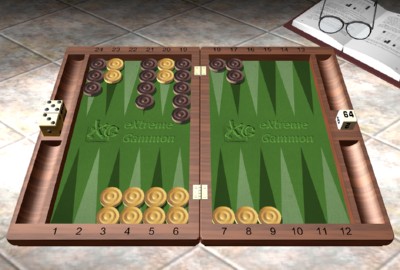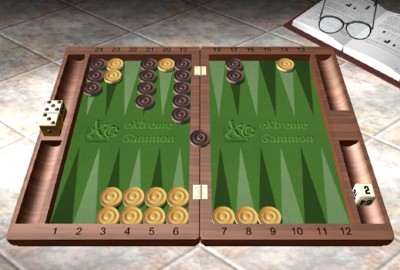Cash game. White owns the cube. White on move.

Should White double? If he does, should Black take, drop, or beaver?
Positions like this are fairly commonplace when playing back games, and they’re tricky enough to lead many players astray.
White has played a 5-2 back game and has just gotten a double shot. Besides fives and twos, he can also hit with 4-1, so he has a total of 22 hits and 14 misses this turn. In the future of course, White may get even more shots.
Some players, encountering this position for the first time, might reason as follows:
> Wow, I have 22 hits! I’m already the favorite!
> And if I hit, I can easily lose my market!
> And I might get even more shots in the future!
> And I could win a gammon!!
> I double!!!
Anything wrong with this reasoning? Well, just a little bit. Let’s look more closely.
Let’s start by examining what happens when White doubles. True, he then hits 22 times out of 36, a bit more than 60%. But how many of those can he win, once Black owns the cube? Let’s give White a pretty average hitting roll, like 4-2, and see how we think he’s doing.

Position after White hits with 4-2 and plays 20/18*/14.
Although he just got hit, Black still leads by 50 pips in the race, which has to be worth something. In addition, he has some pretty good shots in this position: 6-2, 5-2, 6-1, and 1-1, all of which leave Black in a lot of trouble. Let’s be conservative and say that Black can pull the game out a little less than a quarter of the time from this position. In that case, out of White’s 22 hits, we’ll say he can win about 17 of them, losing the other five.
What about White’s 14 misses? Now he’s in real trouble, trailing by 60-70 pips in the race, with his opponent owning the cube. Black won’t redouble immediately, but he’ll be able to use the cube very effectively in the near future when his position improves a little more. At worst, he’ll at least be able to play the game out to the end. I’ll give White four of these games, but no more.
Overall, White’s chances after doubling look like this:
If he hits, he wins 17 and loses 5.
If he misses, he wins 4 and loses 10.
With the cube on 4, White wins about 21 and loses about 15, for a net of 6 games, worth 4 points each. Total, +24 points.
Now suppose White keeps the cube and rolls. Again he hits 22 and misses 14. But now his 22 hits are very strong. Black needs a great shot immediately or he’ll pass a double, and even if he gets his shot, White can hang around until the end. Let’s make White about a 20 to 2 favorite in these games.
If White misses, he still has plenty of chances in the game. Let’s give him 6 games of these 14, losing the other 8. Now, his chances after not doubling look like this:
If he hits, he wins 20 and loses 2.
If he misses, he wins 6 and loses 8.
With the cube on 2, White wins about 26 and loses about 10, for a net of 16 games, worth 2 points each. His total here is +32 points. So he does substantially better by not doubling.
This is a pretty typical result when you get a double shot in a back game. You’re a big favorite if you hold onto the cube, but just a small favorite if you double. Barring some unusual features, these positions are mostly all no double and take.





